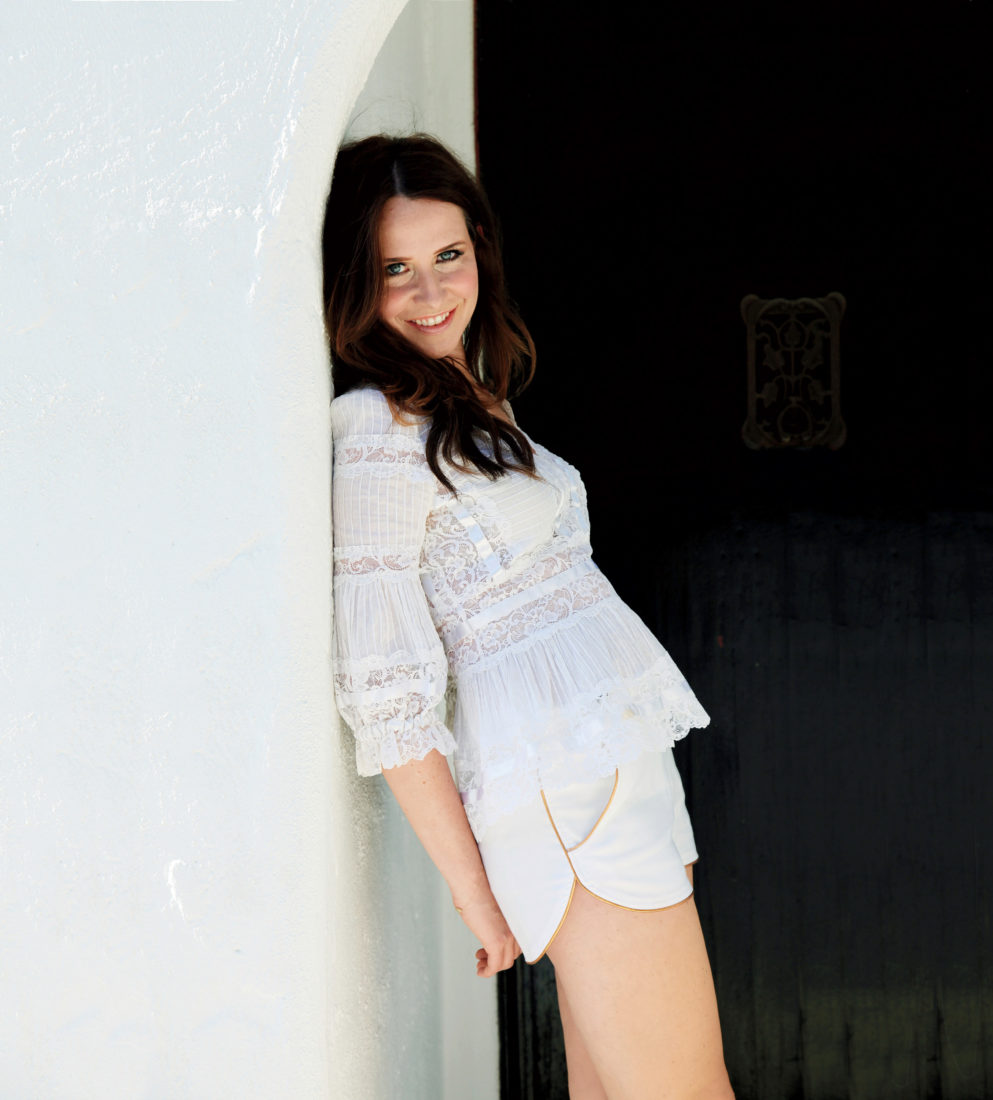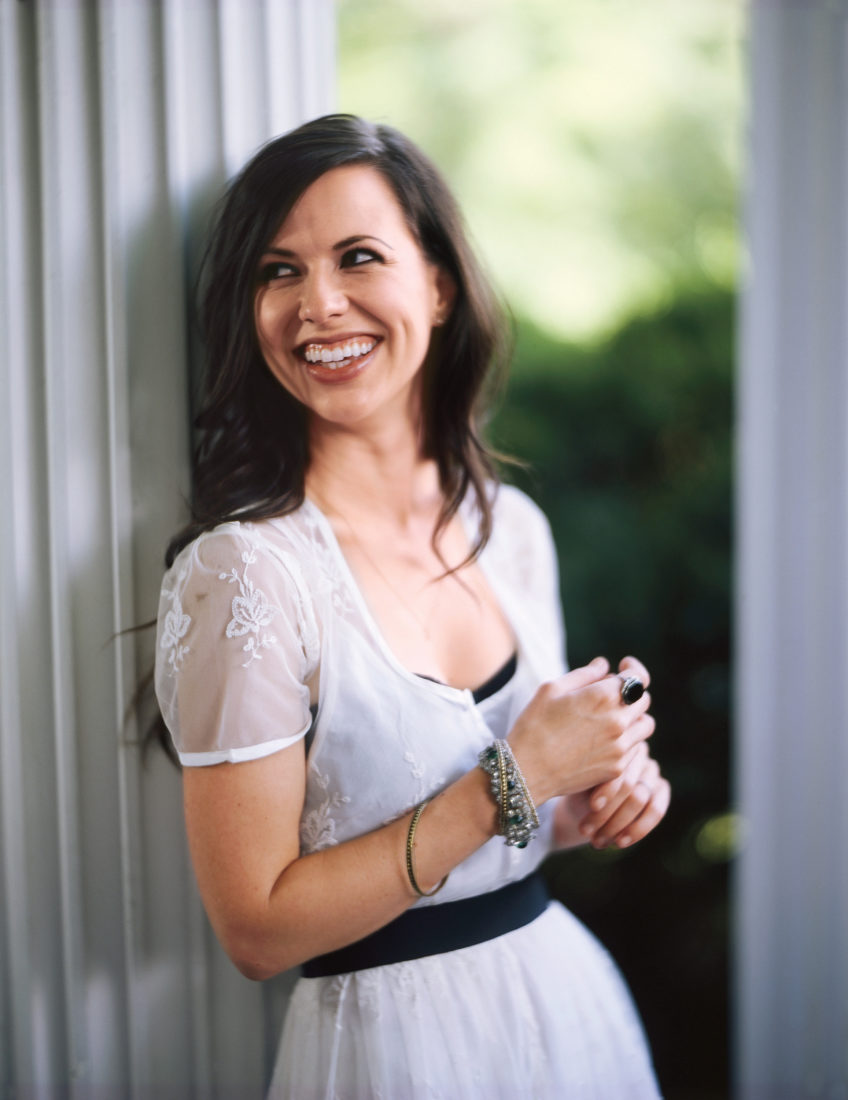Southern Women
Redefining the Southern Belle
Meet a new generation of Southern women

Photo: Dan Winters
Southern women are different. That is a fact. It is not posturing, or hyperbole, or marketing. (See: all those song lyrics about California girls and their undeniable cuteness.) Southern women, unlike women from Boston or Des Moines or Albuquerque, are leashed to history. For better or worse, we are forever entangled in and infused by a miasma of mercy and cruelty, order and chaos, cornpone and cornball, a potent mix that leaves us wise, morbid, good-humored, God-fearing, outspoken and immutable. Like the Irish, with better teeth.
To be born a Southern woman is to be made aware of your distinctiveness. And with it, the rules. The expectations. These vary some, but all follow the same basic template, which is, fundamentally, no matter what the circumstance, Southern women make the effort. Which is why even the girls in the trailer parks paint their nails. And why overstressed working moms still bake three dozen homemade cookies for the school fund-raiser. And why you will never see Reese Witherspoon wearing sweatpants. Or Oprah take a nap.
For my mother, being Southern means handwritten thank-you notes, using a rhino horn’s worth of salt in every recipe, and spending a minimum of twenty minutes a day in front of her makeup mirror so she can examine her beauty in “office,” “outdoor,” and “evening” illumination. It also means never leaving the house with wet hair. Not even in the case of fire. Because wet hair is low-rent. It shows you don’t care, and not caring is not something Southern women do, at least when it comes to our hair.
Southern women can say more with a cut of their eyes than a whole debate club’s worth of speeches.
This is less about vanity than self-respect, a crucial distinction often lost on non-Southerners. When a Southern woman fusses over her appearance, it does not reflect insecurity, narcissism, or some arrested form of antifeminism that holds back the sisterhood. Southern women are postfeminism. The whole issue is a nonstarter, seeing as Southern women are smart enough to recognize what works—Spanx, Aqua Net—and wise to the allocation of effort. Why pretend the world is something it isn’t? Better to focus on what you can control (drying your hair) and make the best of what you have. Side note: Southern women do not capitalize on their looks to snag men, though that often results. The reason we Southern women take care of ourselves is because, simply, Southern women are caretakers.
An example: I have lived in the North off and on for fifteen years. In all that time, only once did another woman prepare me a home-cooked meal (and she was from Florida). I recently visited Tennessee for one week and was fed by no fewer than three women, one of whom baked homemade cupcakes in two different flavors because she remembered I loved them.
Southern women are willing to give, be it time, hugs, or advice about that layabout down the road. Southern women listen and we talk and we laugh without apology. We are seldom shocked. Not really. Sex in the City may have been revolutionary for the rest of America, but not for Southern women. Of course we bond and adore each other, and talk about all topics savory and otherwise. That’s what being a woman means.
In Terms of Endearment, a dying Debra Winger visits a friend in New York and is immediately bewildered by the alternately indifferent and aggressive way the women relate to each other.
“Why do they act like that?” Winger asks a friend, genuinely confused. Why indeed.
Southern women see no point in the hard way. Life is hard enough. So we add a little sugar to the sour. Which is not to suggest Southern women are disingenuous cream puffs. Quite the opposite. When you are born into a history as loaded as the South’s, when you carry in your bones the incontrovertible knowledge of man’s violence and limitations, daring to stay sweet is about the most radical thing you can do.
Southern women are also a proud lot. In any setting, at home or abroad, Southern women declare themselves. Leading with geography is not something that other ladies do. You do not hear “That’s just how we roll in Napa.” Or “Well, you know what they say about us Wyoming girls…” You may hear “I’m from Jersey,” but that’s more of a threat than a howdy.
There are other defining attributes, some more quantifiable than others. Southern women know how to bake a funeral casserole and why you should. Southern women know how to make other women feel pretty. Southern women like men and allow them to stay men. Southern women are not afraid to dance. Southern women know you can’t outrun your past, that manners count, and that your mother deserves a phone call every Sunday. Southern women can say more with a cut of their eyes than a whole debate club’s worth of speeches. Southern women know the value of a stiff drink, among other things.
Which brings us to what can only be called: the Baby Thing.
Southern women love babies. We love them so much we grab their chubby thighs and pretend to eat them alive. This is not the case in the North or the West or the middle bit.
I grew up, like all Southern girls, babysitting as soon as I was old enough to tie my own shoes. I was raised to understand that taking care of children was as natural and inevitable as sneezing, that when we were infants, somebody looked after us, and thus we should clutch hands and complete the circle without any fuss. I was also taught that your children are not supposed to be your best friends. Southern women do not spend a lick of time worrying about whether or not their kids are mad at them. They are too busy telling them “No” and “Because I said so,” which might explain why there are rarely any Southern kids acting a fool and running wild around the Cracker Barrel.
I have two daughters, Dixie and Matilda, and when we go down South, they are surrounded with love from the moment we cross the Mason-Dixon. Elderly men tip their hats. Cashiers tell them they are beautiful. To be a girl these days is more fraught than ever. But growing up among Southern women sure makes it easier.
Which is why we are moving back home. I want my children to know they belong to something bigger than themselves. That they are unique, but they are not alone. That there is continuity where they come from. Comfort too. That there are rules worth following and expectations worth trying to meet, even if you fail. If nothing else, I want them to know how to make biscuits. And to not feel bad about eating a whole heaping plate of them.
Because before I know it, my girls will be grown. And they will be Southern women too. And that, I believe, will have made all the difference. — Allison Glock
The Tastemakers
Janie Bryant
Costume Designer
Anyone who has purchased a pencil skirt in the last four years has felt the influence of Janie Bryant’s glamorous mid-century costume designs for the hit AMC series Mad Men. From Joan’s curve-hugging sheaths to Betty’s pearls and aprons (some of which belonged to Bryant’s grandmother), Bryant’s ensembles do as much as the writing to play up the show’s story line and reinforce a character’s personality. Says Bryant, who grew up in Cleveland, Tennessee: “My grandmother was an amazing seamstress and decorator, and she had such a great design sensibility. She dressed, I mean dressed, for every occasion, and I learned a lot from watching her attention to detail.” The 2011 New York Women in Film & Television award winner is also launching a new website, janiebryant.com, where she’ll muse on all things sartorial.
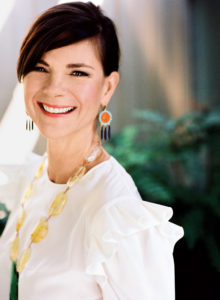 Barrie Benson
Barrie Benson
Interior Designer
Charlotte, North Carolina, interior designer Barrie Benson loves architecture from the fifties. And the sixties. And the seventies. “Every era has value,” she says, “and too many buildings are lost before we realize they need to be saved.” Benson is a tireless advocate for preserving Southern architecture, a cause she took up after investing in her own 1956 ranch-style home. A modern-meets-traditional approach runs throughout her work, from interiors she creates for clients to commercial projects like the newly refurbished Reid’s Fine Foods, a Charlotte institution she helped reinvent as a hyperlocal Southern food emporium. “Eighty years of pictures and memories drove the vintage look,” Benson explains, “while stores like Eataly and City Bakery in Manhattan inspired the design. At the original Reid’s, regulars had tabs. Everything is so global now, people are looking for that sense of community and history.”
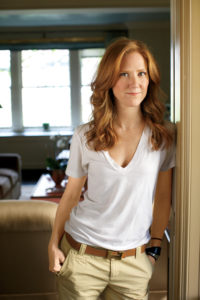 Lindsey Coral Harper
Lindsey Coral Harper
Interior Designer, Furniture Designer
Sure, New York–based designer Lindsey Coral Harper creates chic rooms, but they have to pass the livability test, too, a lesson learned in her native Cartersville, Georgia. “Southerners live and entertain in their homes,” Harper says. “In my apartment, I use real silver. I use china. But everything is comfortable.” After eight years working with legendary decorator Richard Keith Langham, she struck out on her own in 2007. Since then, she’s designed interiors from Vermont to London and launched a classic-with-a-twist collection of furniture and home accessories called Lamshop alongside business partner Maggie Currey. Though the Big Apple is home base, two of Harper’s next big projects are in North Carolina. “I am thrilled to be working down South again,” she says. “People are so accommodating, and when you are under the gun to get things done, the right attitude can make all the difference in the world.”
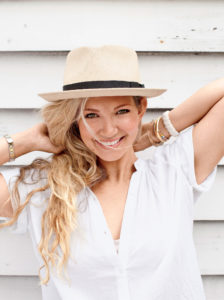
Sally King Benedict
Artist
Sally King Benedict began painting before she could read or write, so it’s no surprise she joined a growing community of artists who share space at Redux Contemporary Art Center in downtown Charleston, South Carolina, after graduating from the College of Charleston in 2007. Benedict’s vibrant abstracts have drawn comparisons to Cy Twombly and Mark Rothko, but she’s most influenced by innovative females like Georgia O’Keeffe and Sonia Delaunay, the French painter who applied her geometric vision to everything from textiles to photography. Benedict often incorporates the kaleidoscopic colors of the Lowcountry and recently began dabbling in portraiture. “I don’t want to stay in one comfortable place,” she says. The bold slashes of hue and subject matter in the painting Gullah, an avant-garde portrait, demonstrate Benedict’s aesthetic. “I painted that face to illustrate the importance of relating to one another,” she says, “and to portray an element in history.” (To see Benedict’s work, visit sallybenedict.com.)
The Women of Billy Reid
The Welcoming Committee
At the Billy Reid store on King Street in downtown Charleston, South Carolina, it’s hard to distinguish the sales staff from stylish shoppers. Employees Jourdan Frye, Shelby Hightower, Addie Dorsey, and Elizabeth Robbat are prone to dropping by even on days off, and everyone, clients included, greet one another by name. “We want everyone who comes in to feel like they’re walking into someone’s home,” says Hightower, an assistant manager. “We send thank-you notes. We offer sweet tea.” Together, Hightower, Frye, Dorsey, and Robbat are a formidable foursome single-minded in their attention to service. “Our goal is to get people excited about the clothes and to offer a new experience,” Dorsey explains. “Whether they’re local or not, our customers leave here feeling like they know us and vice versa.” What’s more Southern than that?
The Authors

Photo: Andrew Kornylak
From left: Natasha Trethewey, Emily Giffin, and Kathryn Stockett.
Natasha Trethewey
Poet
“Poetry is the one way we have of reaching not only the intellect but also the heart,” says Natasha Trethewey, a professor at Emory University. Born in Gulfport, Mississippi, to a black mother and a white father, the Pulitzer Prize winner’s poems explore what it means to be black or biracial in America. She unearths the ignored and forgotten, examining black Union soldiers and eighteenth-century Mexican casta paintings, which depict mixed-race couples and children. “That’s the only way we’re going to actually know a fuller version of American history,” Trethewey says, “one based in reckoning.” Look for her next book, Thrall, in fall 2012.
Emily Giffin
Novelist
The Atlanta-based queen of chick lit has written five novels and is finishing a sixth, Where We Belong. Her first, Something Borrowed, about a thirty-year-old attorney who sleeps with her best friend’s fiancé, debuted this spring as a movie with Kate Hudson and Memphis native Ginnifer Goodwin. “Women and relationships and love remain universal and timeless,” Giffin says. Her appeal? Believable characters who prove empathetic despite their flaws. “Real life isn’t black and white—and it isn’t a fairy tale,” she says. “We’re all just works in progress with rich, complex narratives.”
Kathryn Stockett
Novelist
The best-selling author of The Help (the movie adaptation hits the big screen in August) is writing a second novel set in Depression-era Oxford, Mississippi—William Faulkner’s hometown. “It was such an interesting time for women,” Stockett says. “They were starting to shake off those old Victorian values, and shorten their skirts and show off their legs.” Her success in New York’s cutthroat publishing world suggests she’s just as bold as the rule-breaking women in her books. “You place your bets on your best attributes,” Stockett says. “People would view me as a dumb Southern girl, and then I would get to surprise ’em.”
The Voices
Joy Williams
Vocalist, Songwriter
Like many before her, Joy Williams moved a long way from home to Nashville to pursue music. Unlike many before her, she found success—albeit after a dozen years of hard work as a writer and vocalist. Her folk duo, the Civil Wars (her other professional half is Alabamian John Paul White), had their song “Poison & Wine” featured on Grey’s Anatomy in 2010, and then appeared on The Tonight Show with Jay Leno in January 2011. When they released their album, a haunting mix of Southern spiritual and Southern short story, it topped out at number one on iTunes. Williams is still bowled over. “I would’ve never anticipated it but am savoring the adventure of it all,” she says. “To finally see momentum building is nothing short of thrilling.”
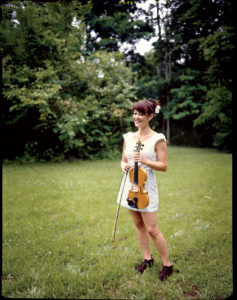 Amanda Shires
Amanda Shires
Vocalist, Songwriter, Fiddler
“Being from the South just fits me,” Texas native Amanda Shires says. “I love summer clothes, porch swings, mint juleps, and fiddle playing.” It’s the playing that’s brought Shires the most attention, for her part in the alt-country band Thrift Store Cowboys and in her growing solo catalog. With a voice that’s equal parts angelic and somber paired with virtuosic fiddle talents, it’s no wonder she was cast as a band member of Gwyneth Paltrow’s character’s in Country Strong or that she counts former Drive-By Trucker Jason Isbell and Justin Townes Earle as fans, even appearing on the cover of Earle’s debut, The Good Life. Drawing comparisons to everyone from Dolly Parton to Tom Waits, Shires is an intriguing mix of darkness and lighthearted ease—just like the South itself.
 Schuyler Fisk
Schuyler Fisk
Vocalist, Songwriter, Actor
Schuyler Fisk wrote her first song after being snubbed by a boy at fourteen: “I just picked up a guitar, played the few chords my mom had taught me, and took my frustrations out in the music.” Now a multitalented performer like her mother, Sissy Spacek, Fisk continues to draw from her own emotions and life experiences, as well as the people around her. After wrapping up production on the Gus Van Sant film Restless, which she’ll appear in this fall, Fisk returned home to Virginia to write and record her second album, Blue Ribbon Winner, which came out in March. Culling inspiration from what you know isn’t the only thing Fisk’s mama taught her. “My mom worked her whole career to be an actress, not to be a celebrity,” Fisk says, “and she always told me to be respectful and kind and as nice to people on the way up as you are on the way down.”
Lizz Wright
Vocalist, Songwriter
You don’t hear much about the music scene in Hendersonville, North Carolina, but Lizz Wright has never been one to follow the crowd. Her smoky, soul-laden voice is as unique as her background. Wright’s first four albums range from inspiring gospel to sophisticated jazz, an output that stems from Wright’s early days singing and playing piano at the Georgia church where her father was a minister. Consider, for example, her bluesy rendition of “Amazing Grace” on her most recent release, Fellowship. But Wright’s virtues and work ethic were most inspired by another classy Southern woman—her grandmother. “In all things, she takes her time and is deeply optimistic,” Wright says. “She laughs easily. As I grow older, I hope I can fully embody my grandmother’s remarkable peace.”
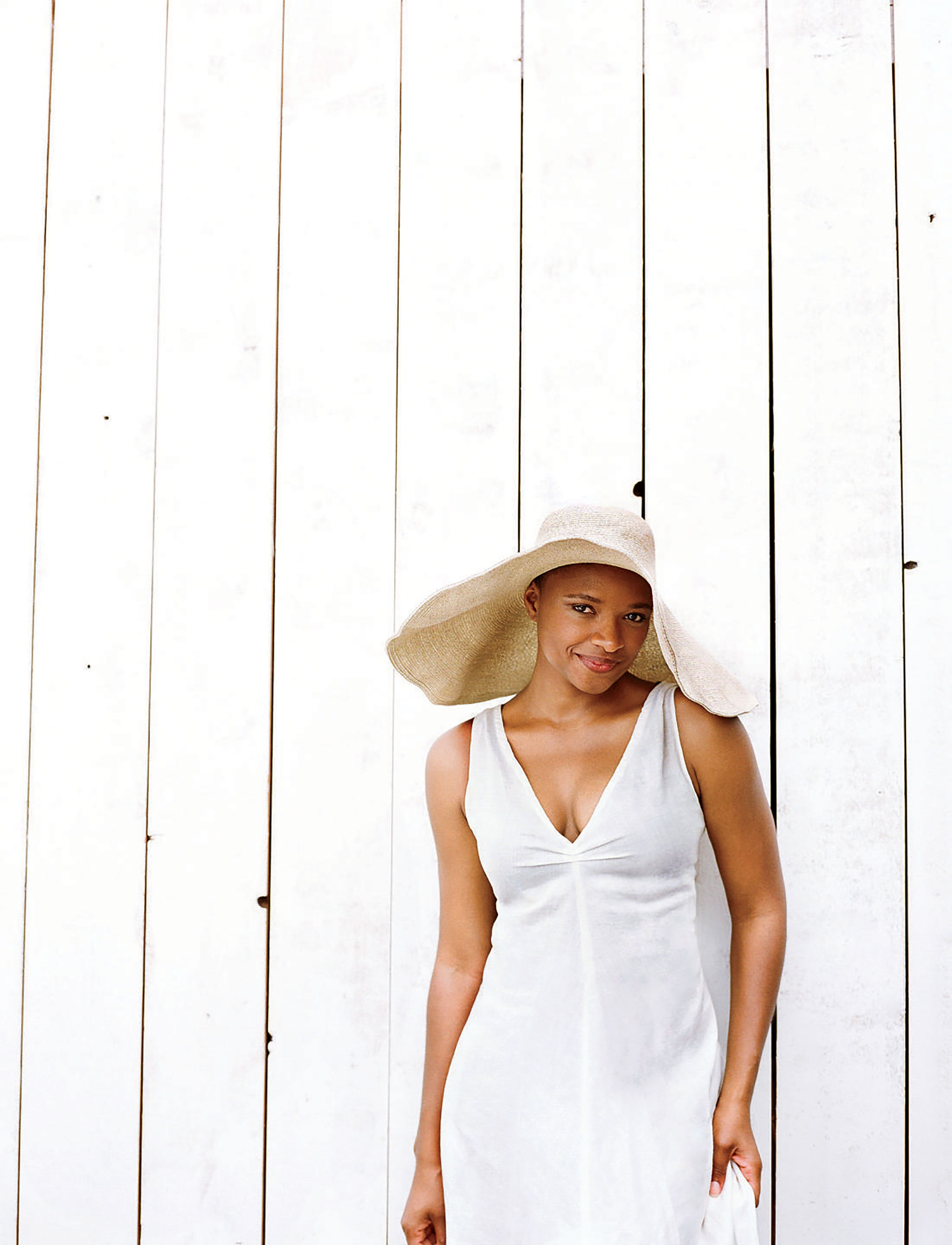
Joey + Jessica
The Epicureans
Andrea Reusing
Chef
Earlier this year, Andrea Reusing bested five of the nation’s culinary elite to claim the James Beard Foundation’s prestigious Best Chef in the Southeast award—and she did so in high heels. “Not the most practical for climbing to the stage,” she joked as she reached the podium. Her surprise over winning the award wasn’t shared by discerning eaters who’ve savored her salt-and-pepper North Carolina wild shrimp and “tea and spice”–smoked chicken, among other brilliant melds of local Southern ingredients and Asian cooking techniques. Reusing has been exercising her creativity and resourcefulness at Lantern, in Chapel Hill, North Carolina, since 2002, and in April released Cooking in the Moment, in which she gives the South credit for teaching her to appreciate a seasonal diet.
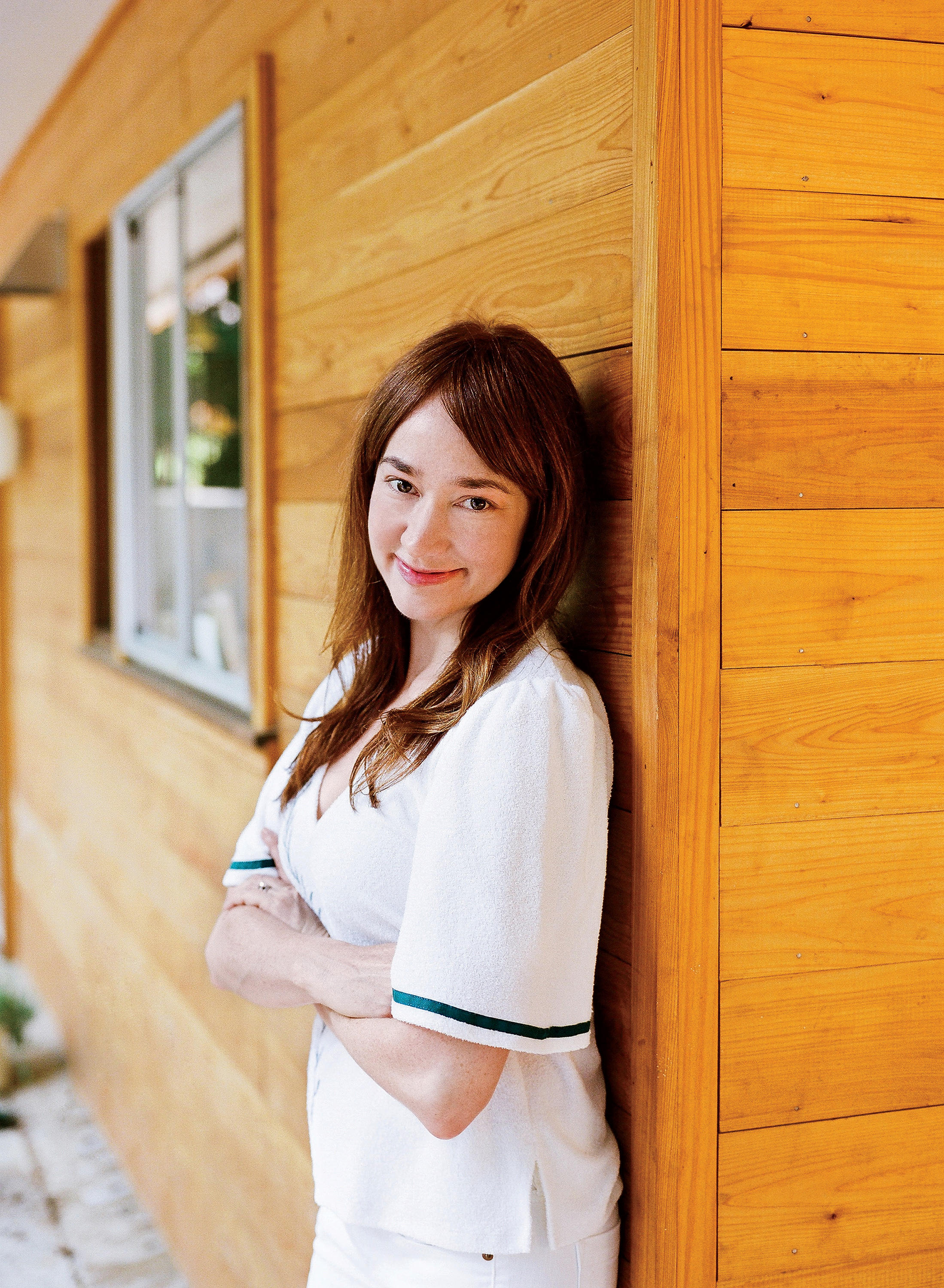
Joey + Jessica
Alexis Soler
Entrepreneur, Mixologist

Hollis Bennett
Spirits sage Alexis Soler doesn’t lack for confidence. The thirty-year-old pilots the bar at No. 308, her stylish new Nashville watering hole, which takes its name from the hotel room where Soler—a spunky Miami native—proposed marriage to fellow cocktailian Ben Clemons one month after meeting him in New Orleans. Soler’s inventive use of fresh ingredients has made her bar a local favorite: Her summer drinks list includes a soju-and-cucumber cocktail served by the jar and a gin-and-sugared-pineapple tribute to storied wit Dorothy Parker. But while Ms. Parker made do with a plain old round table at the Algonquin Hotel, ladies and gents who drink at No. 308 are seated amid livelier furnishings—complete with salvaged wood walls, vintage-modern sofas, and sprouting lemon trees.


